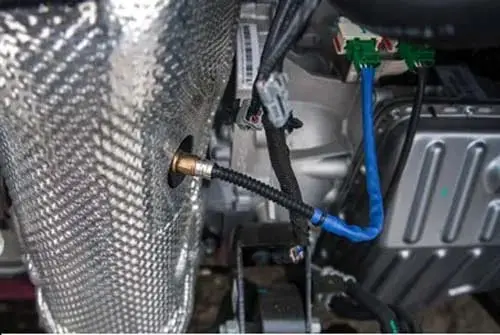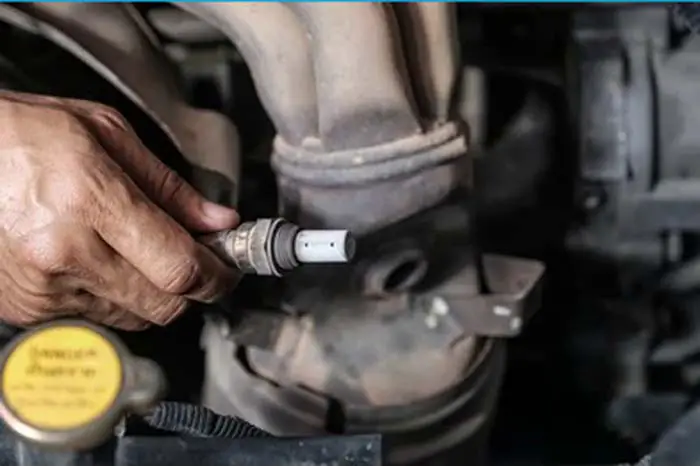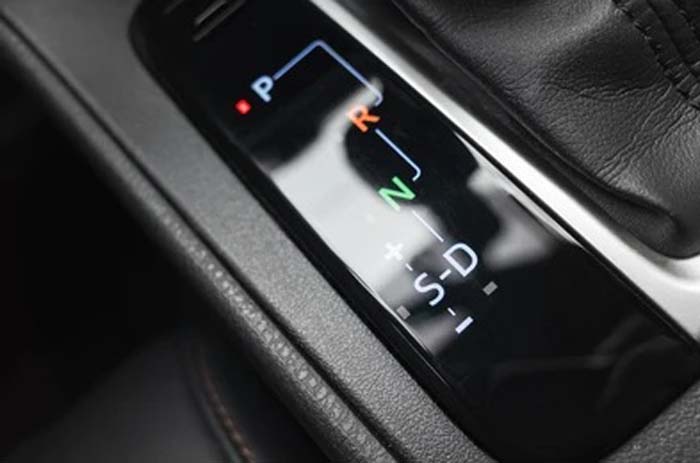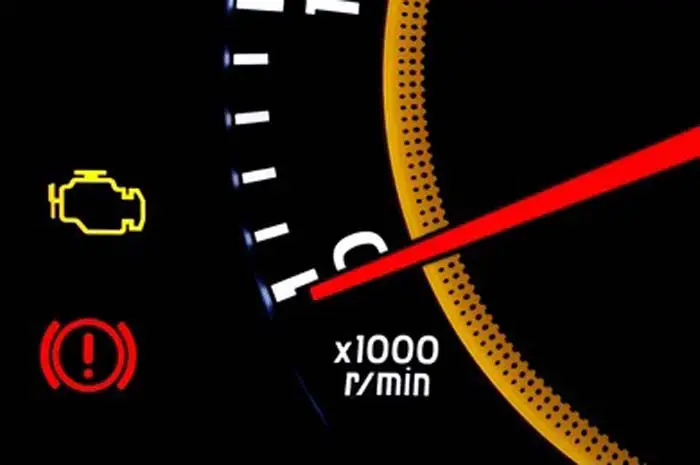
Auto mechanics everywhere know one thing: the oxygen sensor is a crucial part of your car’s exhaust system. Inexpensive to replace and often overlooked, this little sensor is responsible for ensuring that your engine runs smoothly and without fumes.
The oxygen sensor is located in the exhaust pipe of a car and detects the amount of oxygen in the air. When the oxygen level gets too low, the car’s computer will signal a check light. If the car doesn’t have an oxygen sensor, it will just run rough and not be able to go very fast.
If you are driving with an oxygen sensor unplugged, your car may not operate properly. Read more to know the facts about driving with an O2 sensor unplugged.
What is an O2 Sensor And What Does it Do
An o2 sensor (or oxygen sensor) is a component in a vehicle’s exhaust system that measures the oxygen level in the discharge gases. It sends this information to the engine control module (ECM), which uses it to adjust the fuel-to-air ratio for ignition to optimize engine performance and reduce discharge gases.
Related Post: What Is Oxygen Sensor In A Car
Why Would You Want to Unplug Your O2 Sensor
There are a few reasons why someone may want to unplug their O2 sensor, but it’s generally not recommended to drive a car after disconnecting o2 sensor. Here are a few potential reasons:
- Performance Modifications: Some people may unplug the O2 sensor when making performance modifications to their vehicles. This is because the lambda sensor can sometimes limit performance to run better by reducing fuel flow to maintain the discharge gas levels. However, the engine will run rich if the o2 sensor is disconnected, which can lead to decreased fuel efficiency, increased discharge gases, and cause damage to the engine.
- Troubleshooting: If you have a bad oxygen sensor, it may be unplugged temporarily as part of a troubleshooting process. This can help determine whether the lambda sensor is working correctly to measure oxygen levels in the exhaust or not.
- Bypassing Emissions Controls: In some cases, people may unplug the lambda sensor as part of an attempt to bypass emissions controls. This is illegal in many jurisdictions and can result in fines and penalties. Because the car’s emission will increase with the o2 sensor disconnected.
In general, it’s not recommended to run without the o2 sensor unless there is a specific reason to do so, and only for a short period of time. The O2 sensor plays an important role in maintaining optimal engine performance by controlling fuel injection, gas mileage, and discharge gas levels.
Can You Drive With O2 Sensor Unplugged – The Consequences
If the car is running with a disconnected lambda sensor, it might seem like a good idea at the time, but it can cause many problems. It is generally not recommended to operate a motor vehicle with an oxygen (O2) sensor unplugged as this can adversely affect the functioning of the internal combustion engine. Here are five reasons to avoid disconnecting the lambda sensor.
- Poor Fuel Efficiency: When the oxygen sensor is unplugged, your car’s computer won’t receive the correct air-fuel ratio. This means that your engine will be running inefficiently due to wrong ignition timing, causing it to use more fuel than necessary. This can lead to higher fuel consumption and higher gas expenses.
- Increased Emissions: The sensor is an important component to control discharge gases. The lambda sensor is responsible for monitoring the oxygen content in the discharge gas system due to which the car runs better. Unavailability of this information to the computer of the vehicle will result in too rich or too lean performance, which will lead to increased emissions and disturb fuel injection and ignition timing. This can be harmful to the environment and can cause your vehicle to fail emission tests.
- Damage to Your Catalytic Converter: If you drive with a bad oxygen sensor or disconnected sensor for an extended period, the engine will run too rich. This can harm the catalytic converter by overheating and eventually failing. Replacing a catalytic converter can be expensive, so it’s better to avoid this issue altogether by keeping your lambda sensor plugged in.
- Check Engine Light: Driving with a disconnected lambda sensor will create a problem for the computer, which may cause the check engine light. This can be a nuisance and may indicate a more significant issue with your car’s engine or discharge gas system.
- Legal Issues: Your engine can still start without a lambda sensor but it is illegal to drive with a malfunctioning discharge gas system in some states. Driving with a disconnected lambda sensor can cause your car to fail a discharge gas test, which can result in fines and legal issues.
Conclusion It’s clear that driving with a disconnected lambda sensor is not a good idea. It can cause a range of issues, from poor gas mileage to legal problems. If you suspect an issue with your lambda sensor, consult a professional mechanic for advice. Save yourself the hassle and keep your O2 sensor plugged in.
Can You Pass Emissions with an Unplugged Oxygen Sensor

It’s unlikely that a vehicle will pass emissions testing with a disconnected O2 sensor. The O2 sensor is an essential component of a vehicle’s emission control system, and it plays a crucial role in measuring the amount of oxygen in the exhaust gases. This information is then used by the engine control unit to adjust the fuel-to-air ratio to maintain optimal combustion and reduce discharge gases.
If the O2 sensor is disconnected or malfunctioning, the ECU may not receive accurate readings from the sensor. This can cause the ECU to set a fault code, turn on the check light, and may cause the vehicle to fail discharge gas testing. Additionally, an unplugged O2 sensor may cause the engine to run rich, which can lead to poor fuel economy, reduced performance, and increased discharge gases of nitrogen oxides (NOx) and hydrocarbons (HC).
In summary, it’s important to ensure that all components of a vehicle’s discharge gas control system are functioning correctly to pass discharge gas testing. If the lambda sensor is disconnected or malfunctioning, it should be replaced or repaired before attempting to pass discharge gas testing.
Related Post: How Long Can You Drive With A Broken Oxygen Sensor
How to Fix an Unplugged Downstream O2 Sensor
If your lambda sensor is unplugged, here are the steps to fix it:
- Locate the O2 sensor: The O2 sensor is usually located on the exhaust pipe, close to the engine. You may need to consult your vehicle’s owner manual or service manual for its exact location.
- Check the connector: Check the connector at the end of the lambda sensor for any signs of damage or corrosion. If you notice any damage or corrosion, the connector may need to be replaced.
- Reconnect the O2 sensor: If the connector is in good condition, reconnect the lambda sensor to its connector. Make sure that the connector is properly seated and secured.
- Clear fault codes: If the lambda sensor was unplugged for an extended period, the engine control module (ECM) might have stored fault codes. Use an OBD-II scanner to clear any stored fault codes.
- Test drive the vehicle: Take the vehicle for a test drive to ensure that the lambda sensor is functioning correctly. If the check engine light comes back on or if the vehicle fails discharge gas testing, it may indicate a faulty O2 sensor that needs to be replaced.
If you are unsure about any of these steps or if you don’t feel comfortable working on your vehicle, it’s always best to consult a certified mechanic.
Frequently Asked Questions:
In open loop mode, the engine’s fuel injection system operates without feedback from the lambda sensor, while in closed-loop mode, the system adjusts the fuel injection based on feedback from the sensor. Closed loop operation is better for fuel economy and discharge gases, while open loop is used for high-performance driving. If you want a better experience, and good fuel economy then run closed loop mode.
Leaving your car idling for extended periods of time can cause other components of the car, such as the spark plugs, muffler, and manifold, to overheat and potentially fail. This can lead to safety hazards and costly repairs.
Sign Up




